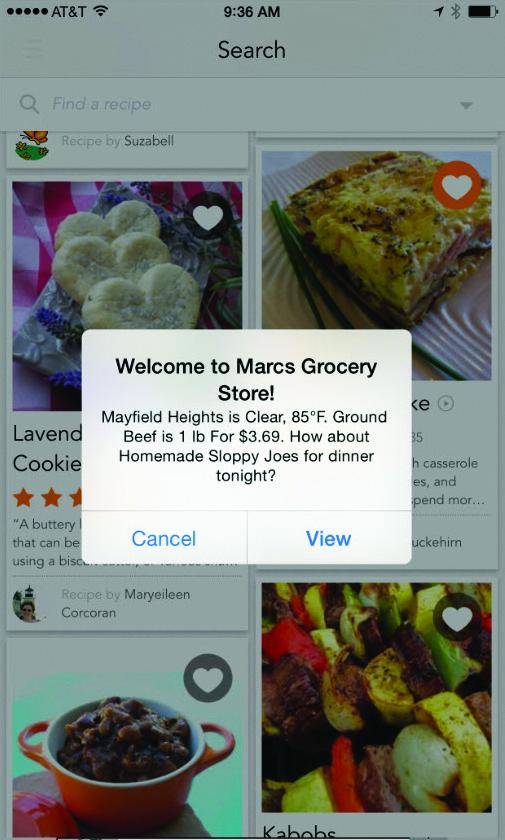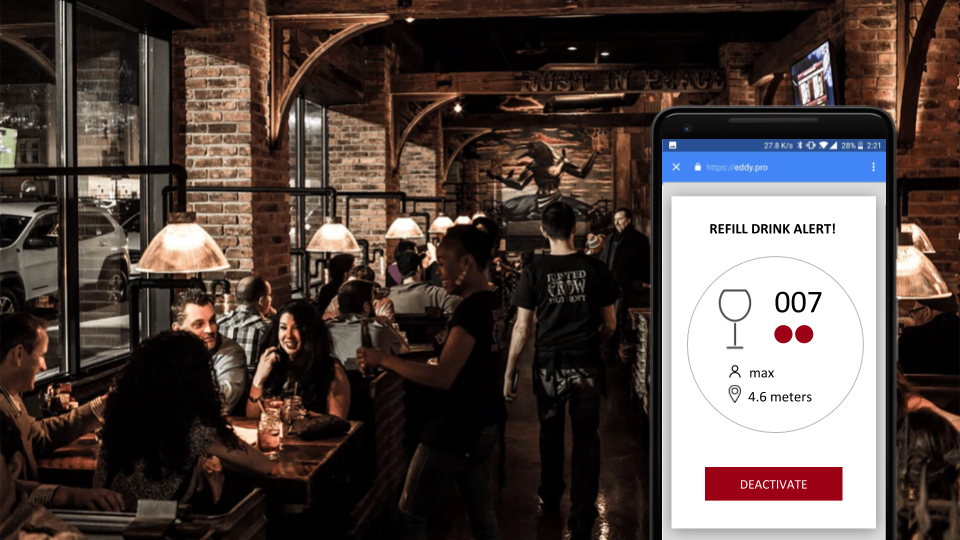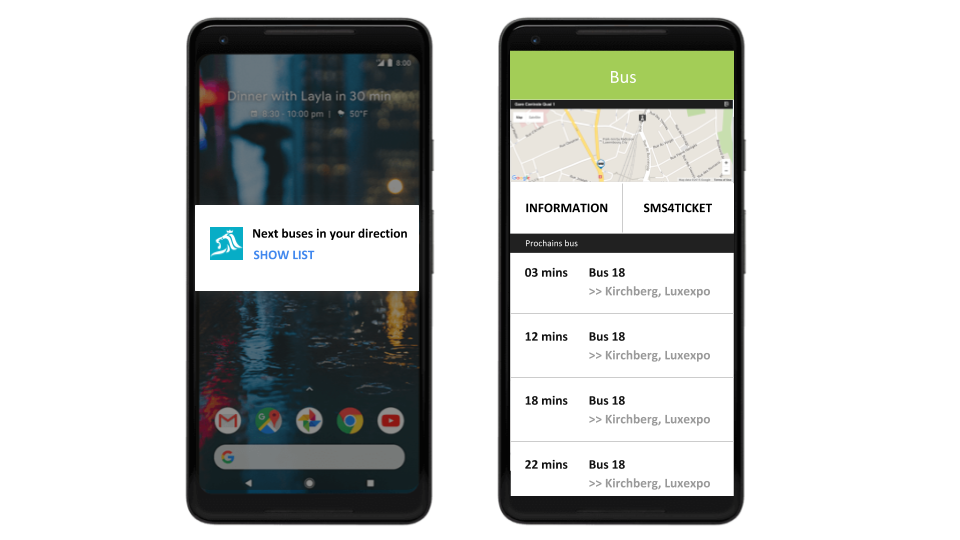Bad customer experience is a recipe for disaster in your retail store.
According to Forbes, businesses are losing $75billion annually as a result of poor customer experiences. And that is in the US alone.
That is why optimizing “customer experience” remains to be a top priority for most retailers today. One way of excelling at it is by adopting the beacon technology in their marketing arsenal.
This post discusses beacon technology, and you can use it to better customer experiences in your retail store.
 Looking for Retail Software? Check out SoftwareSuggest’s list of the best Retail software solutions.
Looking for Retail Software? Check out SoftwareSuggest’s list of the best Retail software solutions.
What is Beacon Technology?
Beacon technology is one of the latest technologies that are finding heavy use in proximity marketing and location technology.
A beacon is a small device that transmits low-energy, Bluetooth signals targeted at other smart devices nearby.
But you have to note there is a difference between Apple’s iBeacon and beacons. iBeacon is a way of transmitting digital data (A data protocol).
Beacons, on the other hand, are battery-powered physical devices that transmit low energy waves (BLE). The low energy signals keep the batteries from draining faster.
How Does Beacon Technology Work?
Retailers are currently adopting beacon technology for proximity marketing. That way, the technology allows retailers to communicate with the customers at the right time.
Beacons also push notifications to the customers’ smart devices at the right place and time.
But, the question is, how does the beacon technology achieve this feat?
Let’s take you through a quick example. Assuming you are running a coffee shop and you have deployed the beacons to help you with proximity marketing:
- The beacons will be transmitting signals in their range. Most of them have a variety of between 20 meters and 300 meters.
- Bluetooth-enabled smartphones detect the signals and then send ID number that is attached to the detected signal to the cloud server.
- The cloud-based server then responds by sending an action associated with the beacon ID. That could mean pushing a notification, congratulation message or just a discounted offer to the recipient (customer).
- At times, these notifications are meant to drive traffic (the customers) to a web form, webpage or a phone number. You could customize the messaging the way you want.
Today, cutting-edge technology is changing the way customers are interacting with brands.
As a result, it revolutionizes the way retailers out there measure both online and offline impact of their online ads.
Here are some of the ways retailers are benefitting from this technology:
1. Helps collect valuable customer data
Think about this. As a marketer of your retail store, you can record when your consumer’s exit or enter your store.
That is useful data that you can use to improve their experiences or even make more sales.
That is the biggest reason retailers are going for this technology in droves.
With beacons, you can easily:
- Determine how many times your customers come or spend in your store.
Track the movements of consumers around the store. For example, you will be able to know how many times your customers visit your store and the specific time-frame when they do that. - How many times a customer is visiting your store within a specific timeframe.
- You can also track their movements around the store departments and any key departments they could be missing.
- Determine the department where your customer is spending most of their times so that you can target them well.
- Establish which promotions that are effective for different demographics.
2. Promotes better user engagement
Beacons help deliver targeted customer information in real-time. As a result, you can be able to provide instant and personalized offers that serve their specific needs.
EXAMPLE:
you could use the technology to offer your app downloaders special discounts and coupons.
This is way, and the technology gives you are a unique way to show value to your customers.
You can also use the technology as an engagement tool for your customers when they are walking around the retail store.
Imagine you have to visit the store, then as you walk around the store, an app sends you a coupon for 10% off the items on the shelf? What would you do? Now, that kind of timely notifications can increase the buying intent of your customers.
3. Growing rewards and loyalty programs
Competition among retailers is on the rise as a result of an increasing number of retailers and differentiated goods hitting the market. To retain customers, retailers are growing adopting royalty programs that reward their customers for their activities within the store. Interestingly, beacon technology is taking these loyalty programs to the next level. They offer retailers for personalized information about the customer – demographics, behavior, actions, and locations.
FOR EXAMPLE:
thanks to technology, you can easily track the number of times your customer is visiting you. You can also follow the amount of money they are spending on your store. As a result, it becomes it to rank your customers for the loyal to the least faithful to your brand.
That way, it becomes easier to send them relevant offers accordingly. If for example, a customer buys from your store thrice or four times a month, you might decide to offer them something like 20% -off so that you keep them glued to your business.
4. Activates in-store automation
Thanks to the beacon technology, your customer’s smartphone can quickly send you a signal whenever they are close to display in a store or product. As a result, it will activate in-store automation.
Imagine what would happen if you entered, let’s say, to the electronic section of your store, and then a commercial relevant to what you are looking for starts playing? Would it not grab your attention?
It is a smart way you can use to catch the attention of your customers, highlight certain displays, or even improve your interactions with them.
5. Easily track the efficiency of your staff
While monitoring your customers might be a good thing, that may not be enough. You also need to track the movement and activity of your employees around the store.
Thankfully, this beacon technology can be used to monitor when your employees are leaving or coming. They also can also be used to track the time they spend in different departments.
At times, you can use beacons to send alerts to employees especially when there is a task that needs to be tackled, where they are required and when it needs to be done.
You could also use the same alerts (reminders) to them if you want your shelf to be restocked.
Sometimes you might see navigation maps giving you directions.
FOR EXAMPLE:
you might get one indicating “YOU ARE HERE.” Interestingly, beacons can do the same. That means instead of you find the mall poster, you will get the directions right on your phone.
The good thing is about beacons is that they will always tell you the department you are in. You can also use them to give your customers clear directions. That way, it makes it easy to make in-store experiences that your customers love.
Examples Of Retailers Benefiting From This Technology
1. Allrecipes
The Ohio-based grocery store provides cooking inspiration to its customers with the help of beacons. Using the technology, the retail offered suggestions with meal recommendations to the customers at the time they were likely to be interested in the content. The notification addressed two significant concerns.
Firstly, it helped them decide what to cook. Secondly, it helped them manage their grocery bill. As a result, their mobile view rose to 26 million – 35.9 million per month.
2. Lyngby Storcentre
A shopping mall in Denmark launched beacon treasure hunts that helped keep kids entertained while their parents shopped. Using “GeoTrail Go”, a mobile application, they could set up indoor treasure hunts.
The beacon treasure hunts kept the kids busy, gave parents more time shop and thus boosting the revenues for the mall.
3. Auchan
A retail hypermarket based in Ukraine started using beacons in 2016 for wayfinding. Using the beacon technology, the retail pushes relevant notifications for promotions and wayfinding as they move about the store. Capturing customer’s attention in the massive 31,000 sq feet retail store would have been a great challenge.
But, thanks to technology, it has now become much more accessible. Using indoor maps, Auchan allows its customers to navigate themselves through the store.
4. Martini
An Italian alcohol brand made their smart cubes that informs bartenders about when the revelers need a refill. These bright cubes are fitted with ibeacon technology.
The technology helps send a Bluetooth alert to the bartender when the glass has hit a slurping point. Most importantly, the cube gives the bartender the exact location of the customer.
Who Else is Using The Beacon Technology?
Beacon technology is sending shockwaves not just in retail, but also across other areas like sports, airports, reports, banking and fast-food restaurants. As a result, marketers could be relied on mobile apps to target and reach out to consumers quickly using technology.
It is offering different businesses a unique way to engage your customers, improve customer service and also promotions.
Examples of non-retailers using beacon technology:
1. Levi’s Stadium
The home of the San Francisco 49ers installed 1,000 beacons making it easier for consumers (ticket-holders) not only to find seats but also, have their drinks and foods delivered to them.
When they created their app, the Stadium’s marketing team adopted beacon marketing technology, and their app had over 183,000 downloads. Besides, it has also led to over $1.25 million increase the stadium’s concession revenue.
2. The search giant, Google
the search giant uses over 2,000 beacons at an Indian railway station. The project was kick-started in 2016 targeting 100 railway stations and later was expanded to cover 2000 railway stations with a mission of rolling out high-speed (free) WiFi at the railway stations. When a commuter was near a beacon or at the railway station, they would receive silent notifications to connect to free WiFi. As a result, Google witnesses about 10% click-through rates.
3. Buses in Luxembourg
Beacons are deployed to push bus schedules in the city. Using beacons, the management can push notifications about coaches that are moving in the direction of interest. As a result, it makes it easier for commuters with a vision problem since the announcements can be read out loud. To make lives easier for passengers who have the vision problem, the message on the notification can be read aloud.
How Much Does Beacon Technology Cost?
Before you take the plunge, you need to ask yourself several questions. There are cost and privacy issues that you need to consider. You need to purchase the app and hardware you are going to use.
You can do a custom app or get a third party app. Developing a custom app will cost you more, raising the cost of deployment of the beacons. But, I have the advantage of increased security and control of customer data.
The third-party app, on the other hand, is cheaper. Companies like Swar and Collect rewards offer apps for as little as $29/month. But you don’t usually have much control over the data.
This could result in privacy issues especially if your store is located in Europe. The consumer privacy laws there are more strict and could land you a hefty fine or a lawsuit.
But when it comes to the cost of the hardware, there are different providers out there.
One provider, Swarm, offers beacons for about $80 each. However, there are other companies out there that list them for as low as $40. Sometimes, you can get them for less.
Summing it up
The beacon technology might not be as futuristic as it sounds. As the jaws of competition rage, your businesses are looking for other avenues to get an edge over your customers.
Many retailers and companies are adopting technology to improve customers shopping experiences. That way, you will be able to meet your customer demands better, besides creating the stellar customer experience.
A Digital marketing expert with a passion for all things digital. With a wealth of experience in the field, can excel at crafting and executing data-driven marketing strategies that drive results. Also, loves to travel and explore new things.










